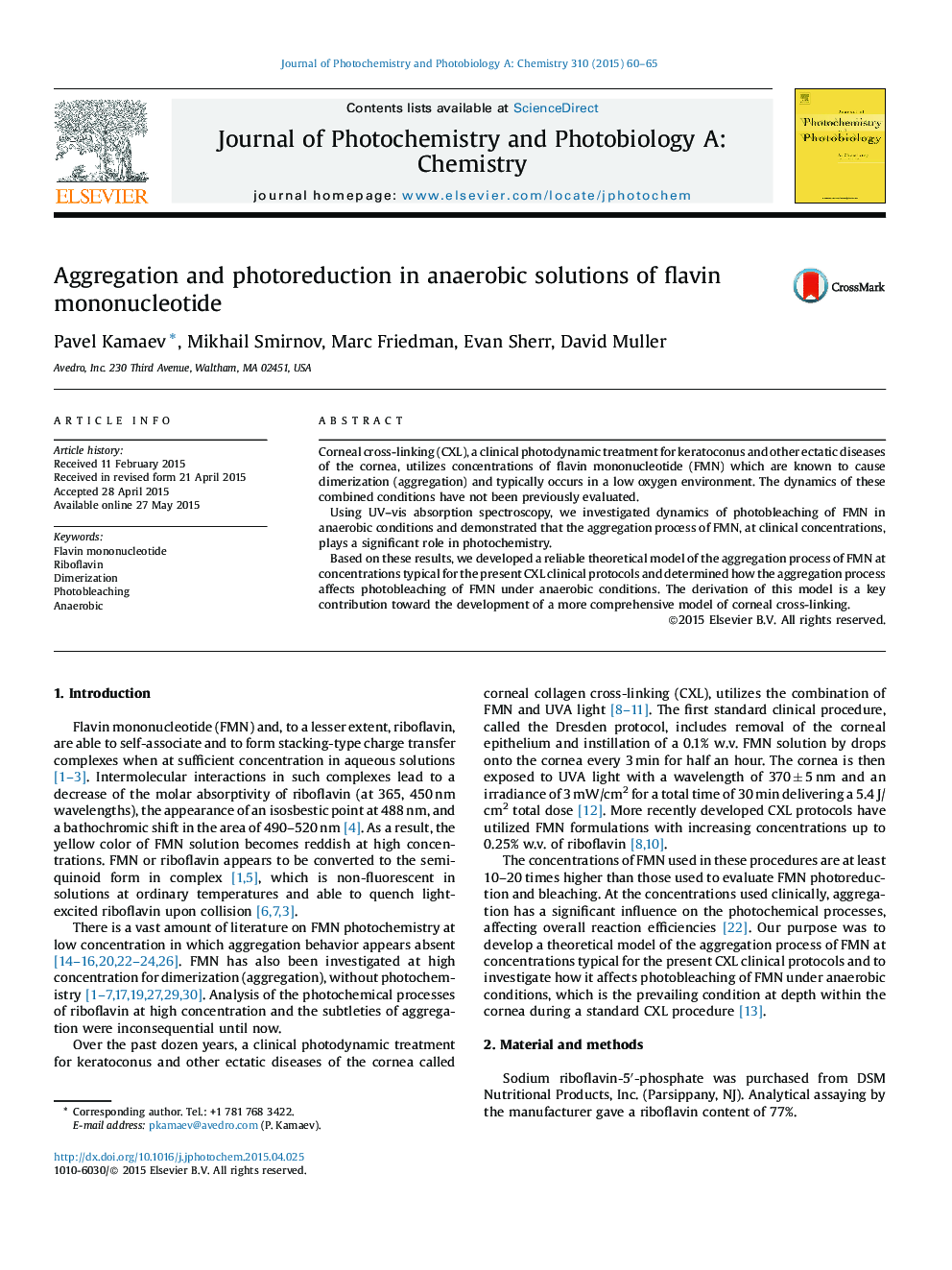| Article ID | Journal | Published Year | Pages | File Type |
|---|---|---|---|---|
| 26590 | Journal of Photochemistry and Photobiology A: Chemistry | 2015 | 6 Pages |
•A theoretical model combining photobleaching and aggregation of flavin mononucleotide (FMN) is proposed.•The model correlates well with the experimental results obtained under anaerobic conditions.•Aggregation of FMN affects the photobleaching kinetics of FMN.•The model explains the role of the initial FMN concentration in the photobleaching kinetics.
Corneal cross-linking (CXL), a clinical photodynamic treatment for keratoconus and other ectatic diseases of the cornea, utilizes concentrations of flavin mononucleotide (FMN) which are known to cause dimerization (aggregation) and typically occurs in a low oxygen environment. The dynamics of these combined conditions have not been previously evaluated.Using UV–vis absorption spectroscopy, we investigated dynamics of photobleaching of FMN in anaerobic conditions and demonstrated that the aggregation process of FMN, at clinical concentrations, plays a significant role in photochemistry.Based on these results, we developed a reliable theoretical model of the aggregation process of FMN at concentrations typical for the present CXL clinical protocols and determined how the aggregation process affects photobleaching of FMN under anaerobic conditions. The derivation of this model is a key contribution toward the development of a more comprehensive model of corneal cross-linking.
Graphical abstractFigure optionsDownload full-size imageDownload as PowerPoint slide
